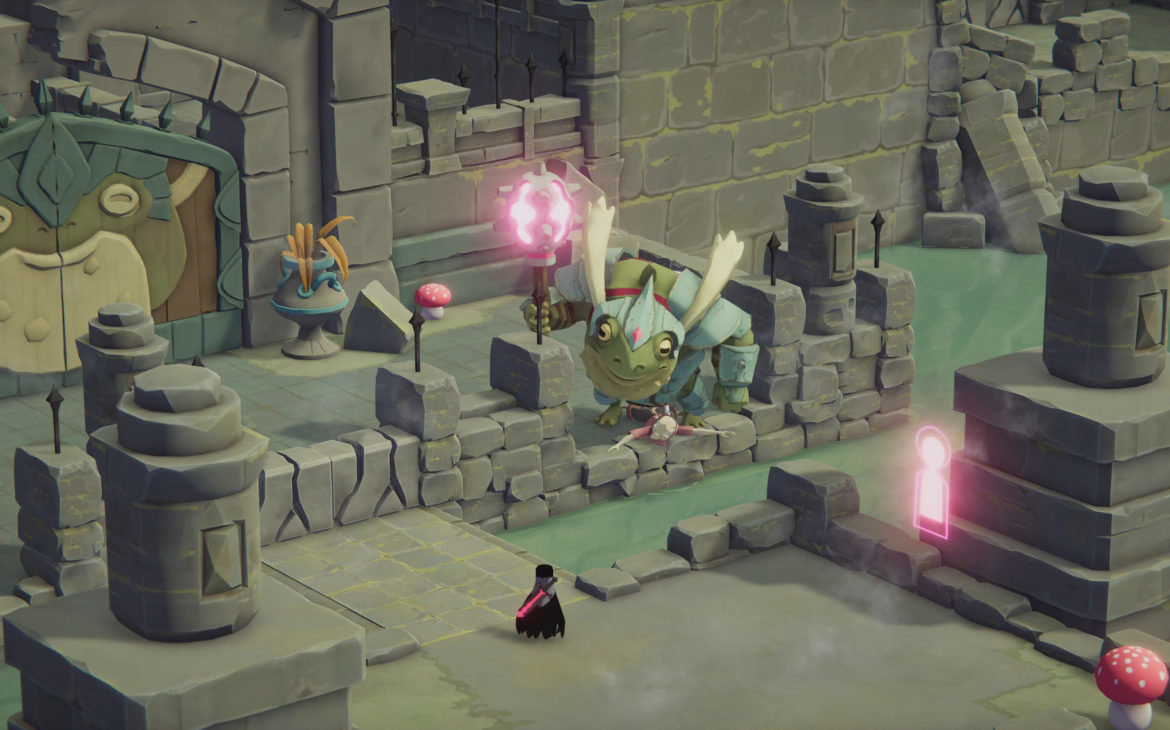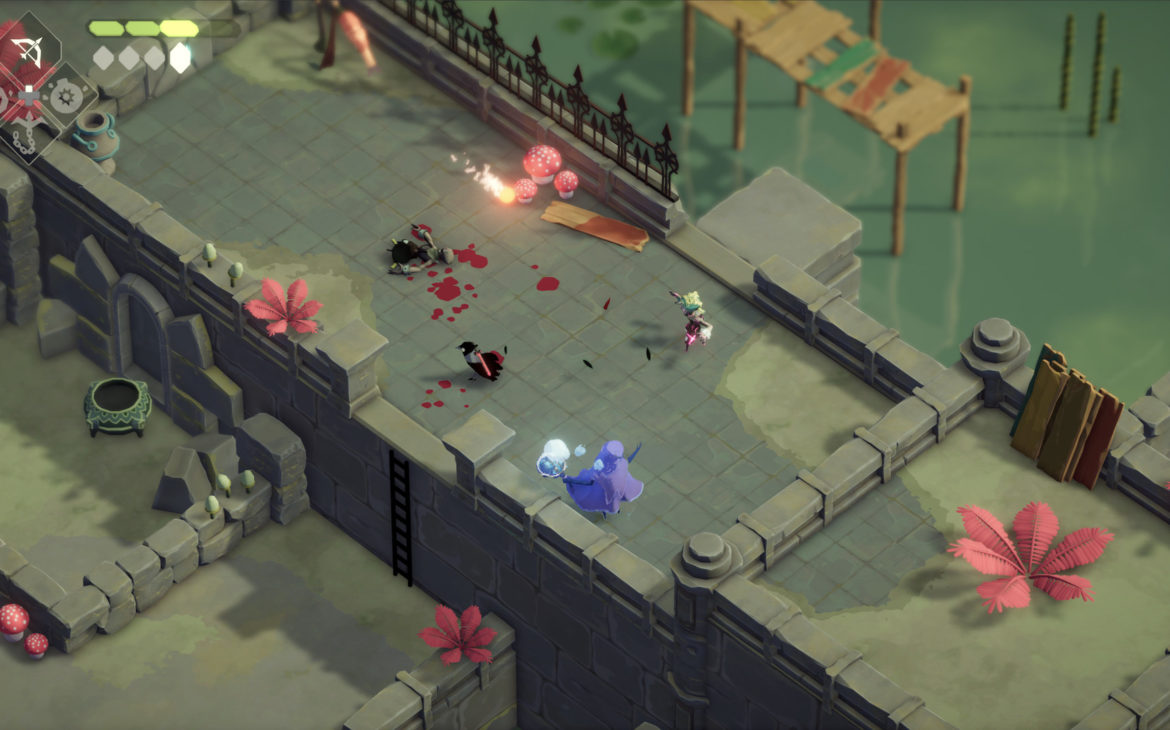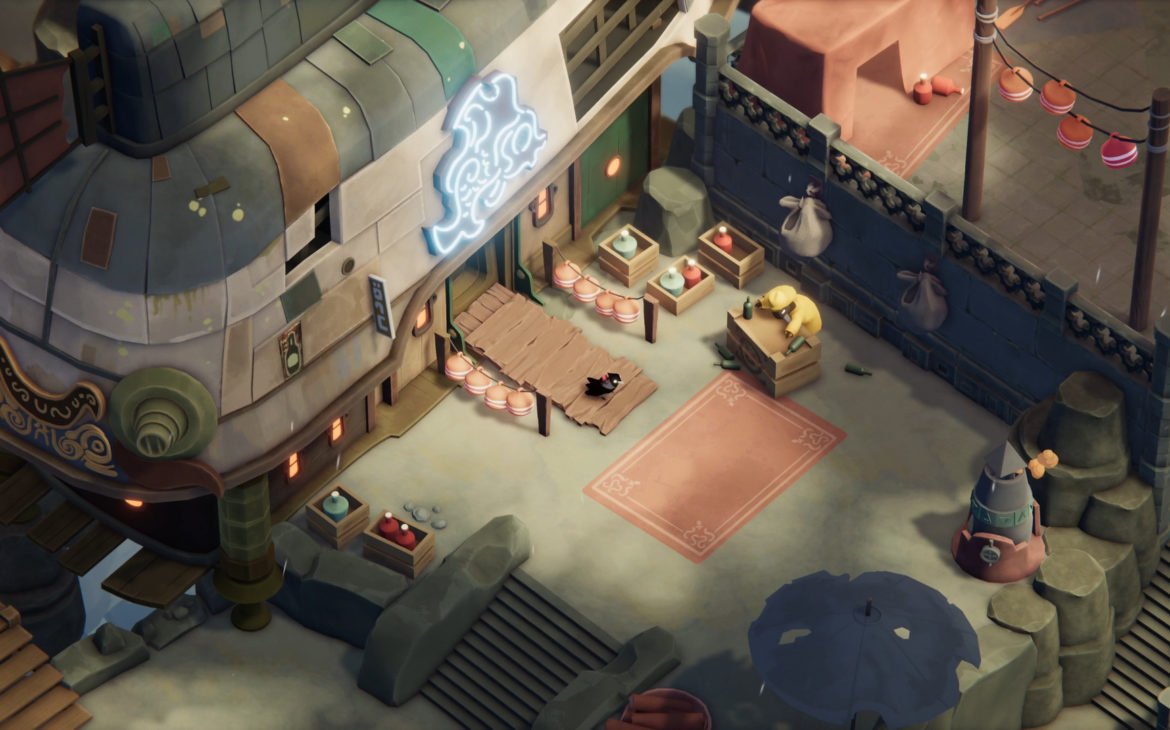Death’s Door Review (Xbox One) – As The Crow Reaps
You remember Titan Souls, that one-hit-you’re-dead Souls-like, where you had just one arrow at your disposal and the bosses all had one not so convenient weak point? It was a nifty and unique take on a genre that was literally about to blow up. Five years on and Acid Nerve are back with Death’s Door, a charming isometric indie souls-like with a lightsaber-wielding crow as a protagonist. If that’s not enough to at least wet your beak and give it a look, I don’t know what is. I could add that it’s published by Devolver Digital which is fast becoming a trustworthy seal of approval in the indie scene, but also they’re a publisher, and doesn’t that mean it’s not an indie? I don’t know, I’m confused by the indie scene these days.
Before we get existential about what is and isn’t an indie, is Death’s Door worth your time and money? Sign the disclaimer, file the report and let’s work through the process map. That’ll all make sense in a minute.

In a monochrome Kafka-esque office that exists beyond space and time, The Reaping Commission Headquarters is infinite bureaucracy, all of the time (you have to sing that bit). It’s staffed by a number of overworked immortal crows who manage and administer the doors that link to the forbidden (colourful and real) world where age and mortality grip all. You play as a brave young crow, complete with flashy red neon sword (don’t call it a lightsaber, Lucasfilm will sue), but not much in the way of a past. Upon arrival you’re sent through one of the doors to reap the souls. Now the souls, they power the doors, so that you can open the doors, to get to the souls. You see where this is going? It’s The Trial, by way of fantasy avians, which let’s face it, wasn’t far from Kafka’s style anyway (he preferred bugs though). I’m not even that bothered that our lead doesn’t have a backstory; it fits with a world of perpetual bureaucracy. He was always there, in that office, with no beginning or end.
When you open a door, you age and you are made mortal while out in the world reaping souls. It’s a risk, but one you are prepared to take, because you get that sweet commission *rubs feathers together*. It’s a great setup, full of deeper meanings if you want to ponder it for a while, especially as you get into the later areas. Your first job goes all kinds of wrong when you reap your first boss soul; a very menacing Grey Crow comes out of another door, knocks you out and steals it. When you awaken, you can follow them into the forbidden Forgotten Cemetery, the game’s outside hub world, and soon discover that without that soul you are infinitely screwed; you can’t complete your task, and they can’t file the admin on that soul. It’s gone. It’s also bust the process map, sitting there like a quest forever incompletable, the crows don’t want you back until you find it.
From here the story opens up into a larger, Dark Souls-like world with multiple areas to explore, shortcuts to find and open, souls to reap and bosses to defeat. You discover Death’s Door itself, the door to which the fiend has sent your hard-earned soul, forever putting it beyond your reach. You must reap three ‘Giant Souls’ (read the three main bosses – although there are maybe ten or so) to open the door and recover your soul, and therefore close the file on this terrible day at the office.

Personally I had a lot of fun even piecing all that together to write about. The story is a light touch during most of the gameplay, but has a nice depth to it towards the end. There aren’t enough games that deal with bureaucracy, or tackle Kafka-type ideas, or the kind of deep existentialism that this veers towards. The other muddled creatures you encounter, curses you must break and bosses you must defeat, all add to a sort of Alice In Wonderland feeling world, which although always pretty bleak, is full of invention.
Some of the lead bosses feel like they’ve been ripped from just off-screen in Spirited Away; the Witch of Urns is like the long nose madam of the bathhouse, the Frog King just one of the many spirits turned grotesque. The script is great fun in these smaller stories, with lots of tongue-in-cheek sarcastic dialogue, puns and easter eggs.
Outside of combat, Death’s Door is a game about exploration, much like a Souls game. The world is a large-scale maze, built up of smaller individual mazes. Each time you complete an area, you are likely to open a shortcut, and each time you die you simply go back to the last door you opened. You can find a few hidden treasures; gems to increase life and magic power beyond the Zelda-esque four hits; the very well-hidden ‘shiny things’; and larger soul gems to spend in the Soul Vault back at HQ on upgrading your stats. The stats are ultra-simple – just five or so levels per stat, and just four to choose from; strength, agility, speed and magic.
It’s also mildly Metroidvania and very Zelda-inspired. Once you get the fire magic you can light the torches to the second area, once you get the Bombs you can open all the annoying little walls that you’ve had to pass on your journey, and once you get the Hookshot you can reach all those posts you had to pass up. Each opens up new areas, but it doesn’t feel quite like it’s been built with Metroidvania style in mind. It’s just a happy accident.

The main gameplay loop though is combat, because Kafka was all about that blood and swordplay. Little Nameless Crow has a three-hit combo, a charge shot, and a rolling slash. On top of that Acid Nerve have kept their signature bow and arrow from Titan Souls, only with four shots instead of one, and you have the aforementioned magic. Lastly there’s the dodge roll that can make him invincible for a split second, and this is pivotal to how fights play out. Most enemies are of the difficult variety, capable of taking you down very quickly. In groups they become formidable. You need to learnt their tells, and their possible movesets, for the moment to attack, the moment to roll away, when you can go for a full combo, or when it really would be better to try with an arrow.
Enemy design is great. There’s lots of fantastical creations that appeal to the Dark Crystal lover in me, from backwards-rolling shell people, a wide variety of mimic-types that live in urns or pots, and plants that shoot and eat you. It’s again very Zelda-like in that respect. Each enemy has particular moments they are vulnerable, and combined with the isometric view, gives Death’s Door some real Link’s Awakening vibes. Even outside of combat, creature design had me thinking of Nintendo with the little flower followers or the poor creature that is encased in a lift and must climb up and down the zip wire whenever I want to go to the forest. I felt sorry for him especially.
The bosses are pure controlled chaos, and really fun to play. The second boss especially (below) – a walking, hovering building that shoots lazers and missiles, and slashes at you with its turrets – this was fantastic. A visceral frantic fight that makes full use of your abilities and dodging skills, it was just fun all the way through, even though he took me a few tries. The same could be said of the big bosses. The Witch of Urns is really fantastically animated, squeezing into her pots with her eyes bulging she goes from shooting, to bouncing, to throwing grenade pots in quick succession and you have split seconds to knock projectiles back at her through all the chaos.

The game can get very difficult at points. There are long sections of groups of enemies you are funnelled through, which become like death gauntlets when you have just four health points and no healing items (there are instead healing points often after these sections). The bosses in the second half of the game will tax your skills to the max. They are very demanding but very fun. And just as a word of warning, the final boss has not one, not two, not three stages, but eight stages total, six of which you must do in one go.
Graphically, it looks pretty similar across the Xbox consoles or PC, in that it’s really not much beyond what previous generation consoles could handle. It doesn’t need to be. Everything has a clean precise style to it and is gorgeously animated. Characters and enemies have that Ghibli film quality to them. Environments are low poly, but from the height you play it makes no difference. The world feels so satisfying to explore, it really is that cliché where you say the graphics don’t matter.

Sounds are great throughout; from the crunch of your sword connecting to the squeeee of the spirit-projectiles screaming about; from the shunting of the furnaces in the witch’s basement, to the squelching of the Frog King’s swamp. The music is lush and multi-layered, but evokes a bleak and melancholic world. Some themes in particular are quite beautiful, such as the Castle Lockstone theme, which plays while you uncover the final resting places of the Lords of the Doors. The music is dynamic in that it adds notes and melodies to the same tune as you pass into new areas, or the battle theme seems to morph directly out of the area theme. The NPCs and such aren’t voiced, so in that respect it is a silent adventure, but it never feels like something’s missing in that respect.
I barely found any technical issues in my time with the game, and I only had a few small gripes. For a maze-like game to have no form of map whatsoever seems strange. I get maybe the developers wanting to preserve the experience, rather than gamify it with a minimap and Satnav, but I really needed something to keep track of places visited, secret souls I hadn’t picked up, and most importantly, barriers I couldn’t open yet, but then need to track down again when I have the right ability. Many Metroidvania’s do this as rote these days, but as I said earlier, I get the feeling Acid Nerve were pushing away from Metroidvania as much as they could within the structure they gave themselves.

Death’s Door – Nice Touches
- Crow’s Feet – every time you choose to retry a section, or use the soul vault shop to buy upgrades, the menu screens use a little crowfoot motif to show your choices.
- Funerals – I know funerals usually aren’t usually anyone’s favourite occasions, but in Death’s Door each boss gets a funeral, and the eulogies are hilarious – I want sarcastic boss eulogies in every game from now on.
Death’s Door is isometric heaven. Taking all the best parts of Souls-likes – the difficulty, world design, combat – and none of the less so – stamina gauges, losing all your souls when you die – it manages to create a visceral slasher with satisfying combat. Its plot is odd and Kafka-esque and its setting is unique yet familiar, bleak yet wonderous, evoking Dark Souls and Ico and Zelda among others. It’s full of the type of invention you might find in something like Bloodborne only made into a dark Ghibli fairy tale. If you enjoy an isometric slasher like Transistor, Hades, or the recent Retro Machina, then Death’s Door should be on your wishlist. It’s right up there with the best of them. But I can only open the door, you’re the one who has to walk through it.
An inventive isometric slasher, Death’s Door feels like all the best bits of Souls-like structure and none of the bad. Its Zelda-inspired combat and systems are firmly at the challenging end of the spectrum, but are also pretty addictive, and mix well with a bleak yet unique story.

Death’s Door is available now on Xbox One (review platform), Xbox Series S/X and PC via Steam.
Developer: Acid Nerve
Publisher: Devolver Digital
Disclaimer: In order to complete this review, we were provided with a promotional copy of the game. For our full review policy, please go here.
If you enjoyed this article or any more of our content, please consider our Patreon.
Make sure to follow Finger Guns on our social channels –Twitter, Facebook, Twitch, Spotify or Apple Podcasts – to keep up to date on our news, reviews and features.



